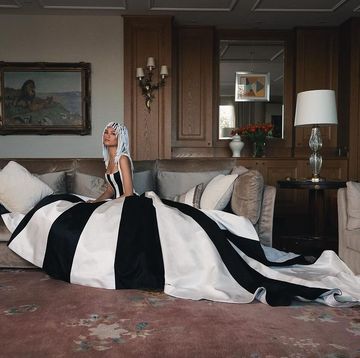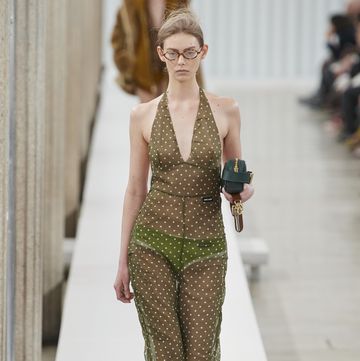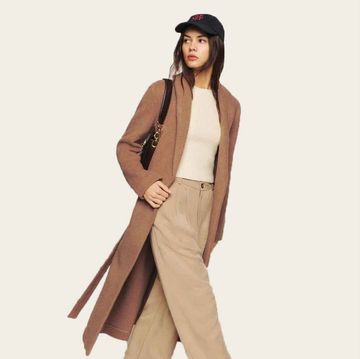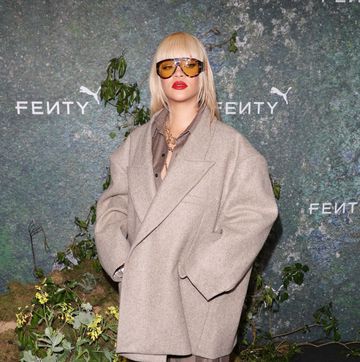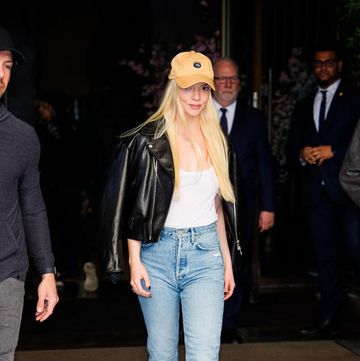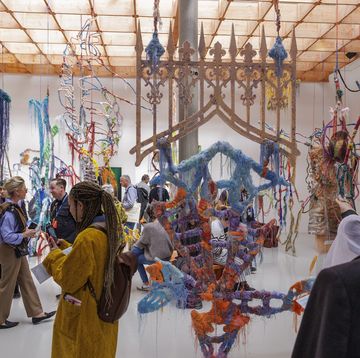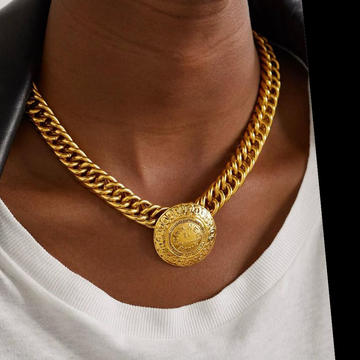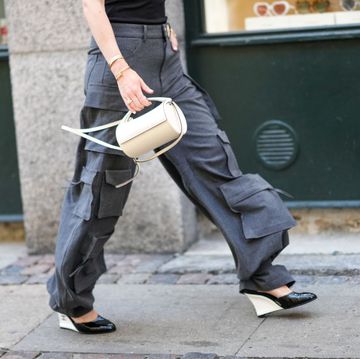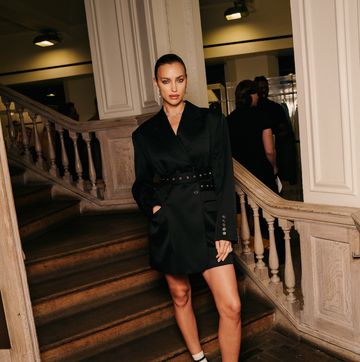Even before the first model stepped out onto the Persian rugged catwalk, evidence of the real life Gucci girl was mounting on the front row: the British model Karen Elson blazed in a traffic-stopping, chilli-pepper red chiffon dress and purple satin mules. Director Gia Coppola demonstrated how to wear Gucci’s androgynous menswear with a leather beret. Fifty Shades Of Grey actress Dakota Johnson had chosen a little nude lace dress. And Sam Taylor-Johnson had adopted one of the label’s black ruffled blouses, which she wore with white 1970s flares. She sat sandwiched between her husband, Aaron, and a rash of classic black Gucci loafers, the sight of which prompted one front row neighbour to announce: ‘That’s it. Gucci is back.’
It was the first time Gucci had presented its Cruise show in New York and invited the world’s fashion press to come and watch it. And it represented a moment in the fashion industry few are likely to forget. After the agenda-setting womenswear debut of Gucci’s new Creative Director, Alessandro Michele, back in February, this Cruise show unveiled his full potential, given the correct amount of time he’d had to prepare it. Michele’s first two collections for men’s and women’s were pulled together in a matter of weeks after the abrupt departure in January of his predecessor, Frida Giannini. Even so, he managed to completely, inexorably reshape Gucci – tossing aside Gucci Woman’s hitherto stiletto-heeled brittle glamour and recasting her as a bobble-hatted, bespectacled girl with incredible personal style.
For Cruise 2016, Michele showed a whopping 62 looks, dizzying in their diversity that consolidated the house’s new codes, and gave a more in-depth look at his colourful, eccentric muse and magpie for anything one-of-a-kind. The androgynous tailoring was there, again on male and female models, but recast here in bubblegum pink, power purple or multi-shaded chevron stripes. He reprised the florals, both bold and delicate, offering them on long, wispy dresses or crisp pleated skirts. There were little tweed skirt suits piped with stripes at the edges and worn with exuberantly ruffled, bibbed blouses. Jumpers came festooned with embroidered insignia. Dresses looked like vintage heirlooms. Eyes darted from a pink satin quilted housecoat to a shiny chocolate leather mac with fox head buttons, to a gleaming gold jacquard skirt suit, meanwhile taking in the gladiator sandals tied with bows or laced with pompoms, and the towering chunky heeled gold loafers. There was a lot to take in. Maybe too much.
But what it represented felt game changing in its fresh, joyful and evangelical spirit of individualism. It was about as far away from cookie-cutter mass-produced fashion as it is possible to get. If there was any criticism at all, it was the sheer (pun intended) amount of transparent lace and chiffon that looked at odds with the idea of empowering statement-making women. Surely, in 2015, There has to be a cleverer way of embodying a more sensitive, insouciant Gucci than flimsy show-all fabrics? Michele said he wanted to capture ‘a renaissance of femininity’ backstage amid a mob of wellwishers. ‘The most beautiful bird is the most colourful,’ he said. ‘The way I look at beauty, it’s very personal. You have to dress the way you feel, like you just don’t care.’
But this wasn’t so much about the renaissance of femininity as the renaissance of Milan fashion, with Michele leading the charge and placing Gucci front and centre stage – a position the brand hasn’t truly enjoyed since the 1990s when Tom Ford was at the helm. Move over minimalism, so long normcore. And may the rule-breaking eccentricity long continue.
As Michele put it: ‘I think I captured something in the air.’
Images above all Getty Images

